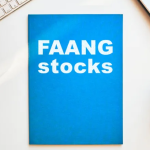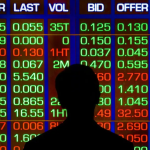
In a financial landscape that has seen its fair share of twists and turns, the Federal Reserve’s decision to maintain interest rates has unexpectedly ushered in a positive ripple effect for savers. As the central bank hits pause, an intriguing trend emerges – a noteworthy rise in savings rates. This article delves into the dynamics of this unexpected turn and its implications for those looking to grow their nest eggs.
The Fed’s Steady Stance:
The Federal Reserve’s decision to keep interest rates steady was a strategic move aimed at balancing economic growth and inflation concerns. However, a fascinating side effect has been the uptick in savings rates, presenting an unforeseen boon for savers.
Surge in Savings Rates:
Competitive Banking Landscape:
The competitive nature of the banking sector is one driver of the rise in savings rates. Faced with a steady demand for deposits, banks are compelled to offer more attractive interest rates to entice savers.
Interest Rate Pass-Through:
The pass-through effect of interest rates is another factor. As the Fed maintains its stance, banks are not quick to adjust deposit rates downward, resulting in higher returns for savers.
Immediate Gains for Savers:
Elevated APYs on Savings Accounts:
Individuals with savings accounts are witnessing elevated Annual Percentage Yields (APYs). This means that the interest earned on savings deposits is more lucrative, offering savers a chance to grow their funds at a faster pace.
CDs and Fixed-Income Gains:
Certificate of Deposit (CD) holders and those invested in fixed-income instruments are also experiencing the positive effects. The stability in interest rates allows for more predictable earnings on these investment vehicles.
Navigating the Landscape:
Consideration for Borrowers:
While the rise in savings rates benefits savers, it presents a contrasting landscape for borrowers. Those looking to secure loans may face slightly higher borrowing costs. Savers should be mindful of this dual impact when evaluating their financial strategies.
Opportunities for Diversification:
The current scenario opens opportunities for savers to diversify their portfolios. Exploring investment options beyond traditional savings accounts, such as stocks or bonds, can be considered for those seeking a balance between risk and reward.
Expert Insights:
Economic Confidence:
Financial experts suggest that the rise in savings rates reflects a certain level of economic confidence. The stability in rates signals a belief in the resilience and strength of the economy.
Long-Term Outlook:
Savers should consider the long-term outlook. While the current trend is positive, staying attuned to economic indicators and potential shifts in the future is crucial for making informed financial decisions.
Conclusion:
As the Federal Reserve maintains its hold on interest rates, the unexpected rise in savings rates offers a silver lining for individuals looking to bolster their financial reserves. Savers can capitalize on this trend by exploring diverse investment options, considering their long-term financial goals, and staying vigilant to changes in the economic landscape. The interplay between the central bank’s policies and the financial markets continues to shape the opportunities and challenges for both savers and borrowers alike.













